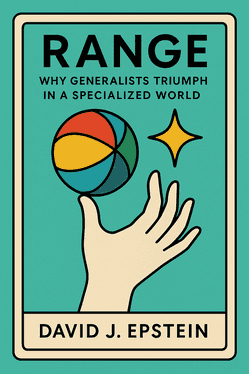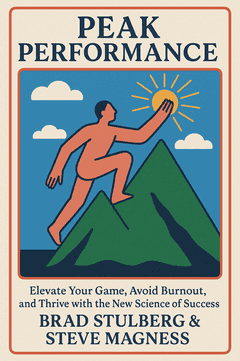What is
The Sports Gene by David Epstein about?
The Sports Gene explores the interplay of genetics and environment in athletic performance, challenging the notion that practice alone determines success. David Epstein analyzes case studies like Major League Baseball players' superior visual acuity and Finnish skier Eero Mäntyranta’s genetic advantages, arguing that biological diversity and tailored training optimize potential. The book synthesizes genetics, evolutionary biology, and sports science to rethink nature vs. nurture.
Who should read
The Sports Gene?
Athletes, coaches, sports scientists, and enthusiasts seeking to understand how genetics and training shape elite performance will benefit from this book. It’s also valuable for readers interested in debunking myths like the "10,000-hour rule" or exploring how traits like height and pain tolerance influence success. Epstein’s accessible science writing appeals to both casual and academic audiences.
Is
The Sports Gene worth reading?
Yes—it’s a New York Times bestseller praised for blending gripping anecdotes with rigorous research. Epstein’s investigation into genetic outliers (e.g., sprinters with ACTN3 mutations) and critiques of one-size-fits-all training paradigms offer actionable insights for optimizing performance. The updated edition includes analysis of youth sports specialization, making it relevant in 2024.
What role do genetics play in athletic performance?
Genetics influence traits like muscle fiber composition, oxygen efficiency, and injury susceptibility. Epstein highlights hypertrophic cardiomyopathy (a heart condition linked to sudden death in athletes) and the EPOR gene mutation enhancing red blood cell production in skiers. However, genes interact with environment—e.g., basketball players’ height advantages only manifest with proper nutrition and training.
How does
The Sports Gene address the nature vs. nurture debate?
Epstein rejects binaries, showing how genes and environment co-determine success. For example, Jamaican sprinters’ dominance stems from a cultural focus on sprinting and a high prevalence of fast-twitch muscle fiber genes. Similarly, East African distance runners benefit from altitude adaptations and socioeconomic factors driving youth participation.
What critiques does Epstein make of the 10,000-hour rule?
Epstein argues the 10,000-hour rule (popularized by Malcolm Gladwell) overlooks genetic prerequisites. While practice matters, traits like baseball players’ rapid visual processing—20% faster than average—create ceilings for non-genetically gifted individuals. Elite athletes often combine innate advantages with targeted training, not just cumulative hours.
Are there genetic disadvantages discussed in
The Sports Gene?
Yes. Epstein examines mutations like sickle cell trait (increasing collapse risk in extreme exertion) and the ApoE4 gene variant linked to prolonged brain trauma recovery. These examples underscore how genetic profiles can heighten risks in specific sports contexts, informing safer training practices.
How does height relate to athletic success in the book?
Epstein notes extreme body types dominate sports—e.g., NBA players’ average height (6’7") is 7.5 inches taller than the U.S. male average. Height results from ~700 genetic variants and environmental factors like childhood nutrition. This “global sorting” of bodies into sports maximizes genetic potential through early specialization.
What does
The Sports Gene say about gender differences in sports?
Biological differences, like men’s greater muscle mass and women’s flexibility advantages in gymnastics, stem from evolutionary adaptations and hormonal profiles. Epstein stresses these are population-level trends, not determinants of individual potential, and critiques policies conflating sex and gender in competition.
How does
The Sports Gene compare to David Epstein’s
Range?
While The Sports Gene focuses on biological factors in sports, Range advocates for generalist success in specialized fields. Both books emphasize context-specific optimization—genetic gifts in sports vs. broad skill integration in careers. Epstein’s interdisciplinary approach ties thematically to understanding human potential.
What are criticisms of
The Sports Gene?
Some argue Epstein overemphasizes genetics, potentially undervaluing socioeconomic access to training. Others note exceptions like Derek Redmond (Olympian with subpar genetics), though Epstein counters that outliers don’t disprove population trends. The book avoids genetic determinism, stressing interactionism.
Why is
The Sports Gene relevant in 2025?
With advancements in genetic testing and personalized training, Epstein’s framework helps athletes optimize routines based on DNA insights (e.g., ACTN3 testing for power vs. endurance sports). It also informs debates on fairness in sports, such as intersex athletes and gene-editing ethics.
Key takeaways from
The Sports Gene
- Biological diversity: No “ideal” athlete exists—genetic outliers excel in specific contexts.
- Tailored training: Match regimens to genetic predispositions (e.g., altitude training for hypoxia responders).
- Risk awareness: Genetic screening can prevent injuries like sudden cardiac death.
- Ethical nuance: Balance inclusivity with competitive fairness in policy.














